Who hasn’t sprained their ankle at some point in their lives? In this post, we’ll talk about the sprained ankle, how to treat it and how to tell it from a fractured ankle.
Table of Contents
- How do I know if I have a sprained ankle?
- How To Treat A Sprained Ankle
- What’s The Best Rehab For a Sprained Ankle?
What Is A Sprained Ankle?
There are ligaments in every joint of our body, including our ankle. They are fibrous structures that keep our joints together. Without them, our bones would be looser, only fixed by muscles.
The most common way to sprain our ankle is by twisting it after stepping with our foot looking inwards, with the lateral side against the floor.
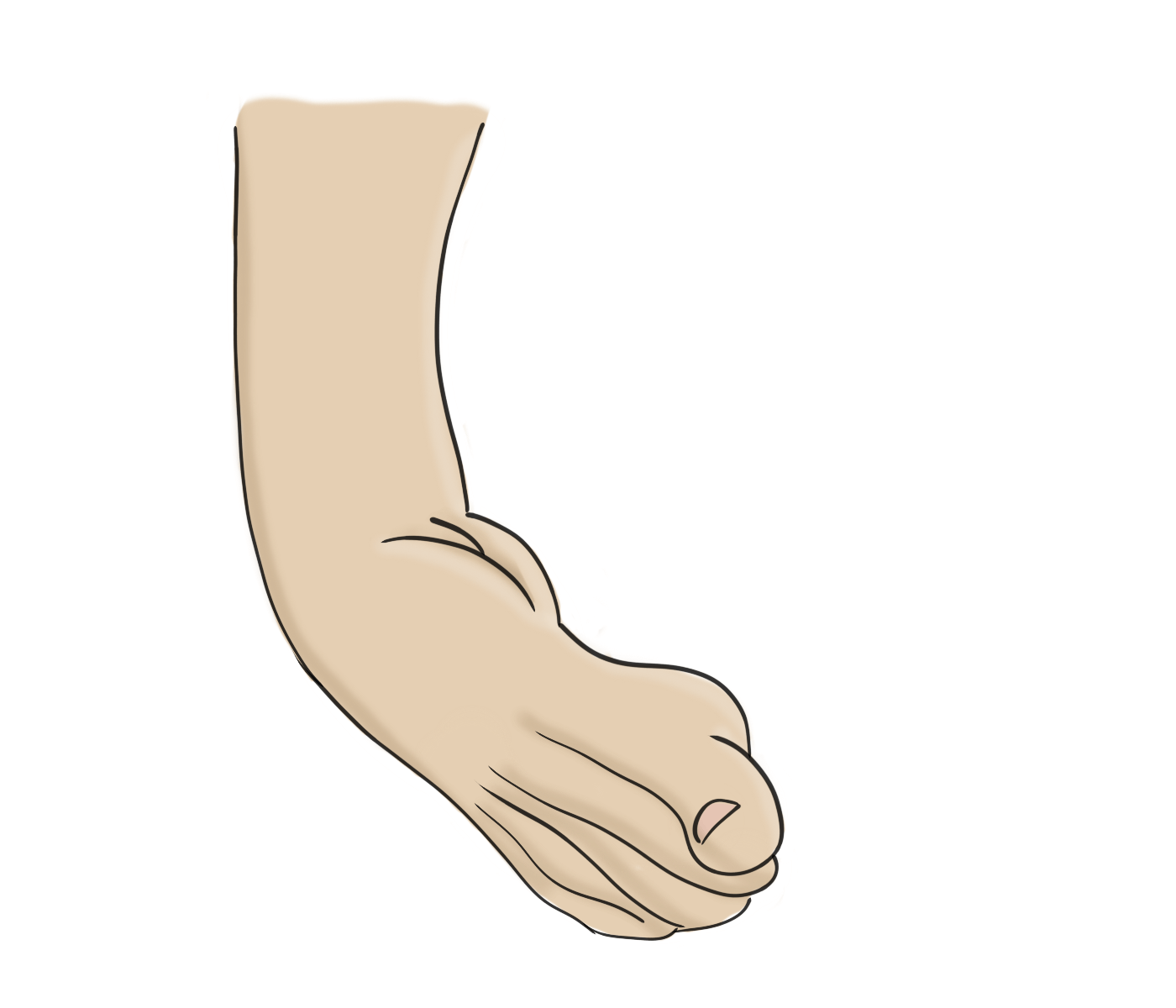
When we do that, we put too much stress on our lateral ligaments. If you have a mild sprain, the ligaments will only “stretch too much” and you’ll be sore. On the other side, in a severely sprained ankle, you can tear your ligaments.
Anatomy of the ankle
We have ligaments on the lateral side and on the medial side. When we sprain our ankle, our lateral ligaments are the most frequently damaged. They are:
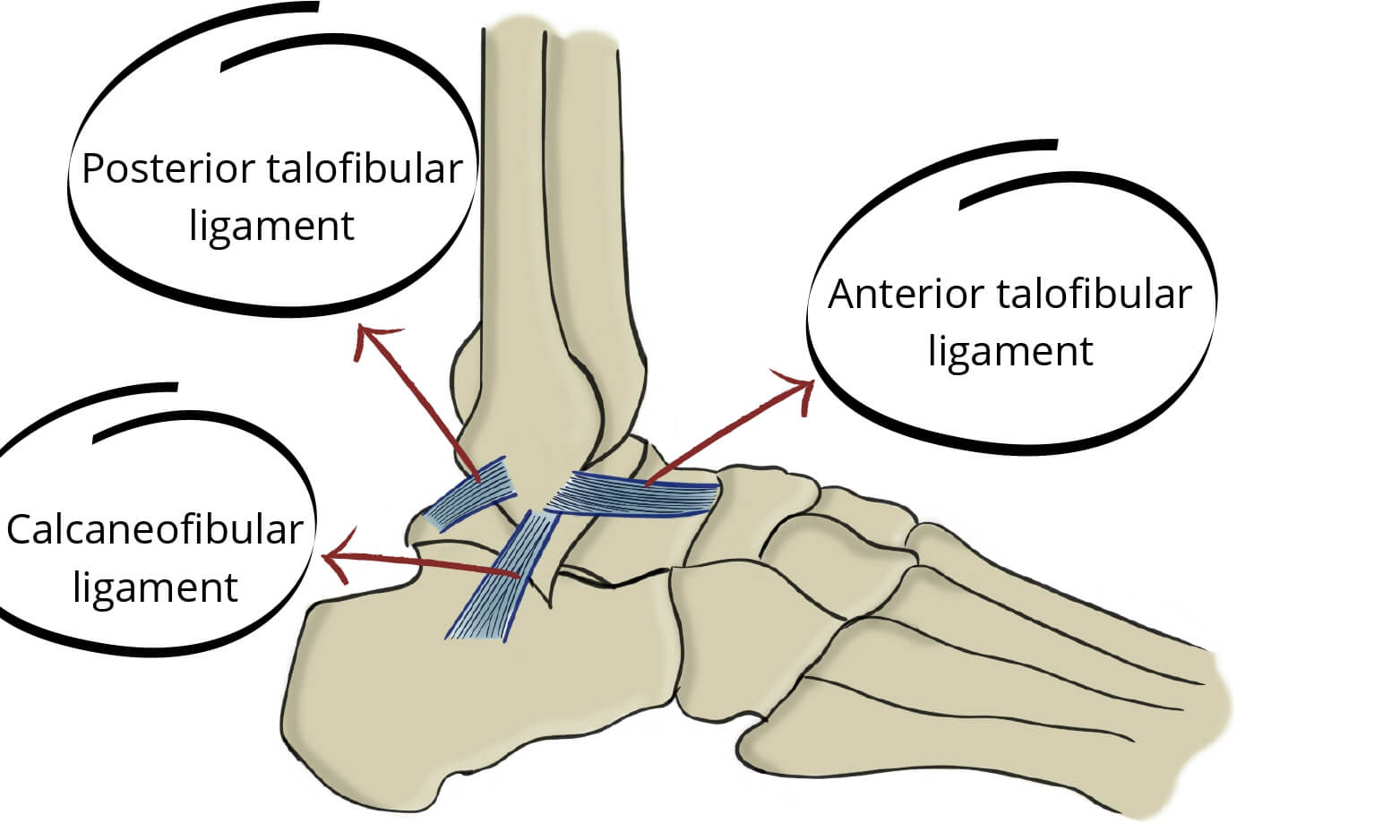
The most vulnerable is the anterior talofibular ligament. It is the first one to get damaged after a sprain.
There are other ligaments, like the deltoid ligament on the medial side. They only break after high-energy trauma, like ankle fractures.
How do you diagnose a sprained ankle?
If you twisted your ankle and now you have pain and it’s swollen, chances are you have a sprained ankle.
This pain is usually on the lateral side of your ankle. If you press on it, it hurts badly. If you walk, it hurts too.
Also, you may get a bruise on the area.
Is it a sprained ankle or a fracture?
Sometimes, a non-displaced fracture can look just like a sprained ankle. They can hurt the same.
Doctors use the “Ottawa rules” to evaluate patients with sprained ankles.
They palpate the following bones looking for tenderness on:
- The lateral malleolus
- The medial malleolus
- The 5th metatarsal
- The navicular
- Also, they ask the patient to walk and see if they can take 4 steps.
These rules are great for ruling out a fracture: if a patient doesn’t have any of the Ottawa symptoms, we can rule out confidently a fracture.
If, on the contrary, the patient has some of the “Ottawa items”, you’ll need to get an x-ray to rule it out.
Once we know we have a sprained ankle, we must know how bad it is. To find that out, we have to examine the ankle looking for abnormal looseness.
Grade 1 (Mild)
The ligament has overstretched and there may be microscopic tears.
Grade 2 (Moderate)
There is a partial tear of the ligament. There is some looseness of the joint when we force inversion (the same movement that caused the sprain).
Grade 3 (Severe)
Complete tear of the ligament. The joint is quite loose and is unstable.
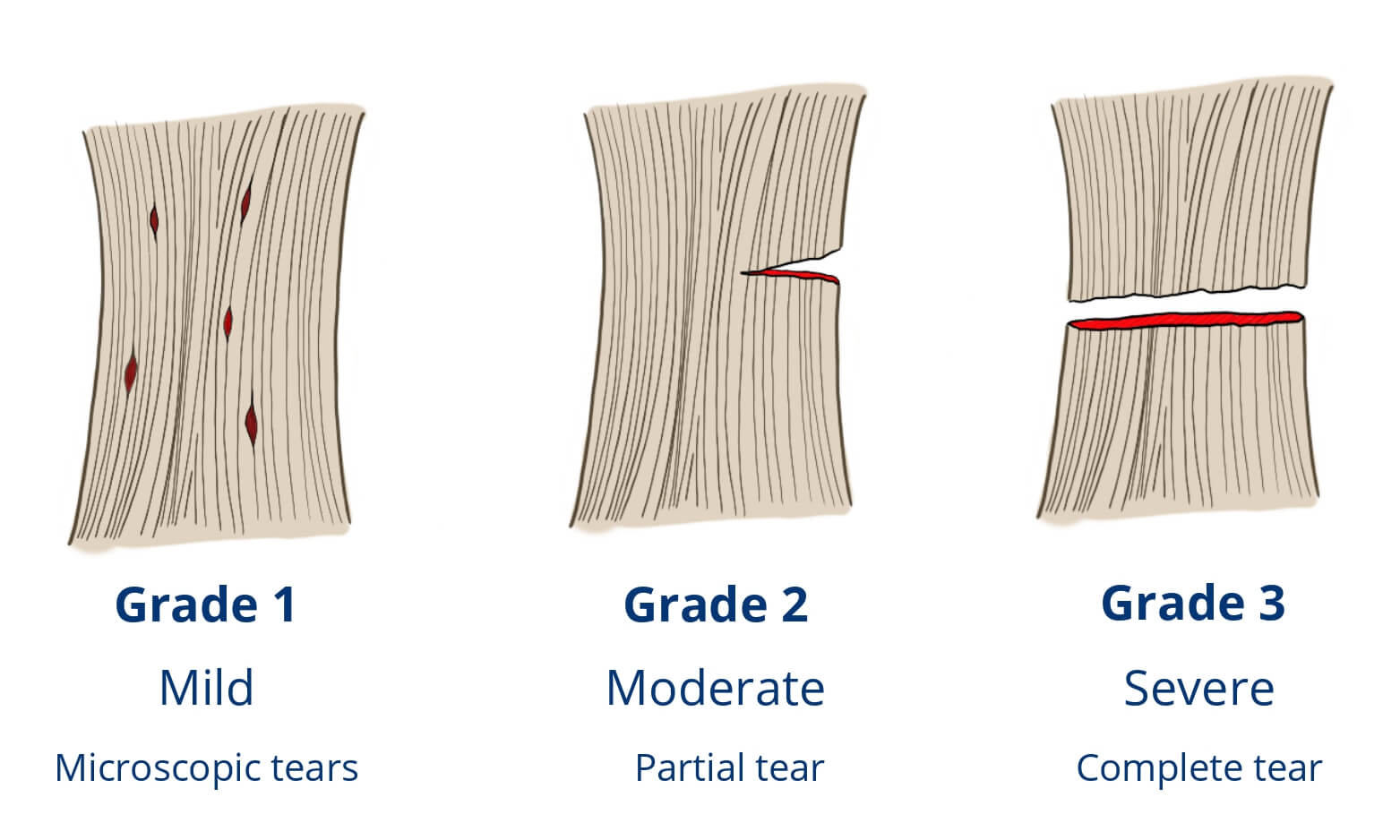
Fortunately, most sprains are mild or moderate.
Severe sprains happen after violent twists, so there are sometimes associated fractures.
If your doctor thinks there is a ligament injury, they may perform an MRI, to check your ligaments. Most of the time, however, it is not necessary. A simple x-ray is usually enough to rule out any fractures.
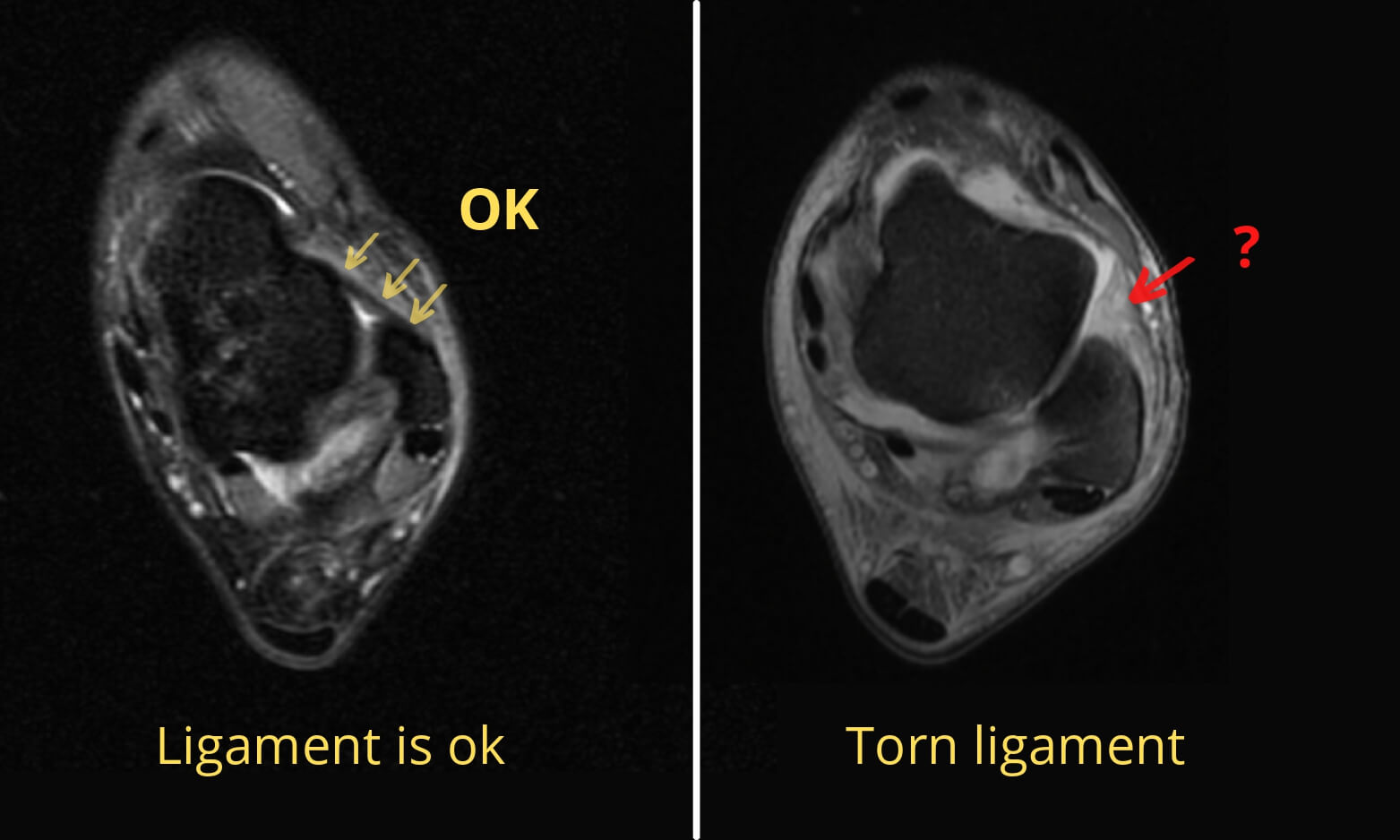
How to treat a sprained ankle
We treat sprained ankles through R.I.C.E.:
- Rest: you can walk, just try to avoid sports, running… Some years ago, doctors recommended absolute rest (not walking at all). But now, they recommend relative rest: you can walk carefully, without stressing your ankle. This is a better option because the tendons and ligaments) can get weak after a period of inactivity. If the sprain is severe, you can use some crutches to avoid planting our foot the first days (only in severe cases where we might have torn our ligament).
- Ice: it reduces the inflammation so that your ankle is less swollen. It also relieves pain.
- Compression: you can use a bandage or a compression-dressing. This will fix slightly our ankle so that you don’t sprain it again. Also, compression avoids too much swelling. In very extreme cases, your doctor may choose to use a cast for extra fixation. However, this is not recommended, as it can cause deep venous thrombosis (it would only be acceptable in really severe sprains, with ligament rupture).
- Elevation: when you rest, try to keep your foot elevated. This helps with swelling, as it drains all the lymph fluid accumulated in the ankle.
What drugs can I use to reduce pain?
If you need some medication to control your pain, you can take nonsteroidal anti-inflammatory drugs (NSAIDs) such as ibuprofen or naproxen. Always ask your doctor before taking any drugs, especially the first time. Some people are allergic to aspirin and NSAIDs, so don’t take them if you are. There are other alternatives, like acetaminophen. Again, ask your doctor before taking any drugs.
When do you need surgery?
Most cases don’t need surgery. Sprained ankles heal with time and rest. Only if there is massive instability you could need surgery. And this only happens after a terrible injury, when several ligaments get completely torn. Also, you will need surgery if you have a fracture, besides the sprain. Ankle fractures can require surgery. The surgical technique will depend on the injured structure. The orthopedic surgeon will try to fix the ligament or bone fragment, either with arthroscopy or open surgery.
What’s the best rehab for a sprained ankle?
We use rehab to achieve several goals. The most important is to preserve the range of motion after a period of immobility. If you keep your ankle still for a long time, it will lose tremendous range of motion. After some months with a cast, for example, your ankle is barely able to flex or extend. That’s why we need to avoid long periods of immobility. Also, rehab helps reducing the loss of strength in the muscles that bring stability to your ankle. Finally, rehab can help us improve balance and proprioception and thus, avoid future sprains.
· The first weeks after the sprain:
In the acute phase, the most important thing is to rest. You need to reduce the swelling. To avoid stiffness it’s important to keep moving your ankle. You want to keep your range of motion so move your foot as long as it doesn’t hurt. First, flex it and extend it. Walk if you can. Always watch your pain. Pain will tell you what you can and can’t do. If it hurts, don’t force it.
· After a few weeks:
Once the ligament is starting to heal, you can proceed with proprioception and strength exercises.
- For strength, try some elastic bands to improve your strength in several directions. This is important because we tend to place emphasis on flexo-extension. However, we must also train lateral resistance, because that’s the direction in which most ankle sprains happen.
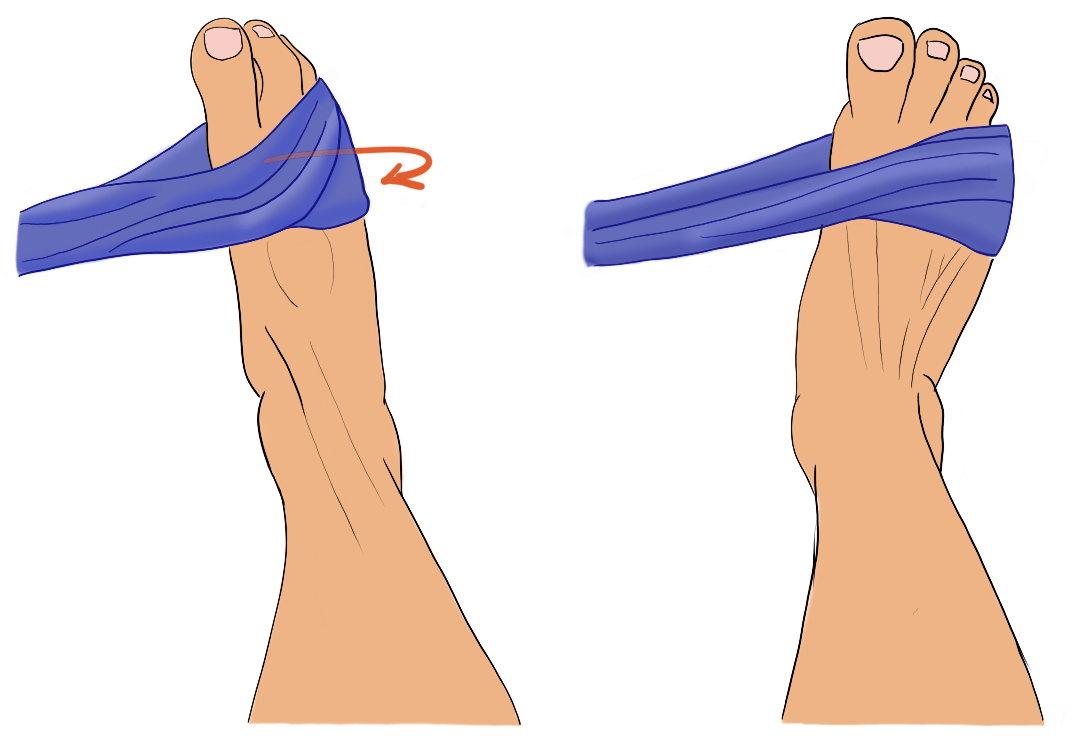
- Balance and proprioception. Proprioception is the “mental image” we have of our own body position without using our eyes. It is an important factor for balance and we can train it to reduce the risk for a new sprain. To do this, the most simple way is by closing our eyes and trying to stand on one foot. Although it seems easy, it’s harder than it looks. Our body tends to fall sideways, but after some training, you’ll improve a lot. Then, you may use a balance board, but only after you’ve recovered and have been doing the “basic” exercise for some time (using balance boards is hard and you don’t want to get hurt again).
How long does it take to recover?
Normally around 4-6 weeks, unless you had a very severe sprain. However, many people have multiple sprains during their life, especially if they practice contact sports. That’s why it’s important to recover fully. It’s better to regain all the possible strength and balance rather than hurting your ankle once and again. In fact, after many ankle sprains, many people develop “chronic sprain”, where they feel constant pain and a constant feeling of instability. Make sure to focus on a full recovery to avoid ending up there.
Sources
- General info: https://www.nhs.uk/conditions/sprains-and-strains/
- Severity and treatment: https://orthoinfo.aaos.org/en/diseases–conditions/sprained-ankle/
Dedication
For my cousin Carlos, who always sprains his ankle while playing handball…
Leave a Reply